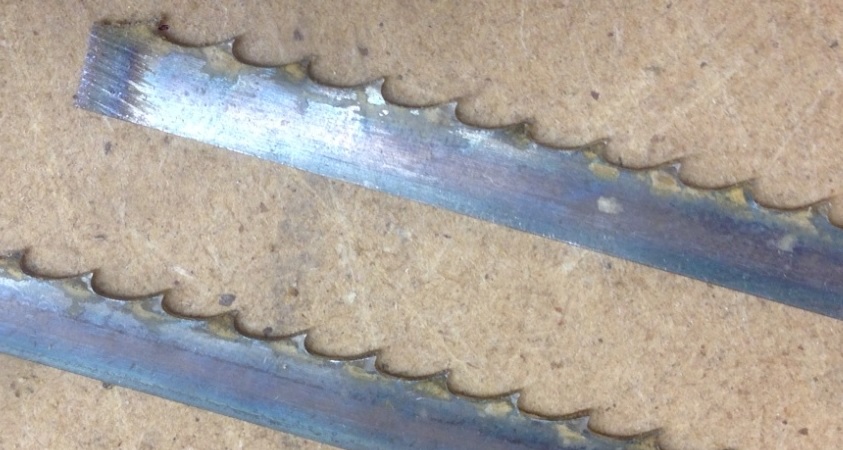Just had my weekend ruined by a broken bandsaw blade (that'll teach me not have a spare!).
It's a 6 TPI 1/4 inch, Tuffsaw blade but I've had it 10 months, that sound about the right lifetime for a blade used only at weekends?

Close up of blade..

What's odd is it broke cutting really thin stock, 3mm thick hardboard.
My dust extraction is a bit poor, you can see the build up inside machine, does that shorten life of blade?
It's a 6 TPI 1/4 inch, Tuffsaw blade but I've had it 10 months, that sound about the right lifetime for a blade used only at weekends?

Close up of blade..

What's odd is it broke cutting really thin stock, 3mm thick hardboard.
My dust extraction is a bit poor, you can see the build up inside machine, does that shorten life of blade?





